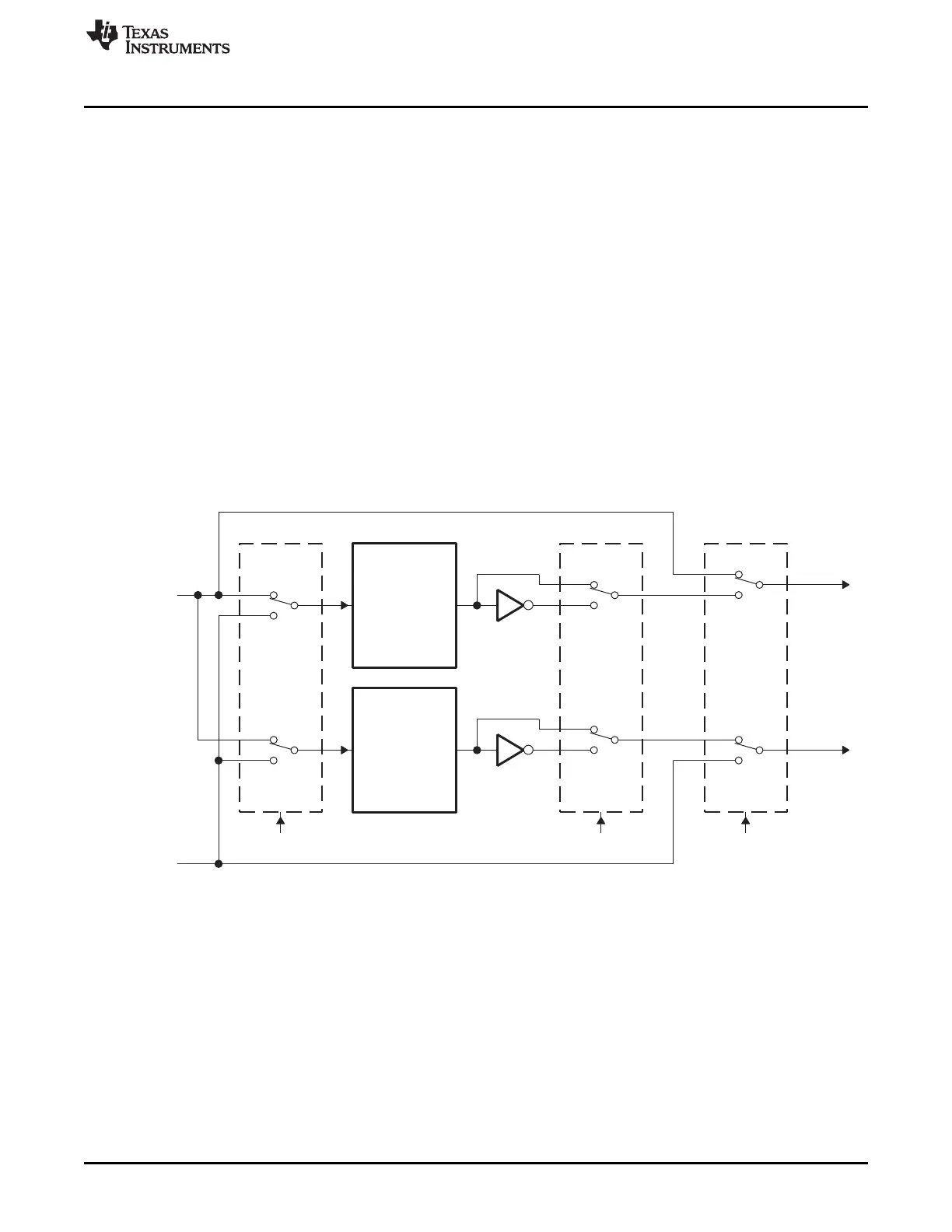0
1
S2
1
0
S1
RED
OutIn
Risingedge
delay
(10-bit
counter)
(10-bit
counter)
delay
Fallingedge
In Out
FED
1
0
S3
0
S0
1
EPWMxA
EPWMxB
DBCTL[POLSEL] DBCTL[OUT_MODE]
S5
DBCTL[IN_MODE]
1
0
S4
0
1
EPWMxA in
EPWMxBin
www.ti.com
Enhanced PWM (ePWM) Module
15.2.2.6.3 Operational Highlights for the Dead-Band Generator Submodule
The following sections provide the operational highlights.
The dead-band submodule has two groups of independent selection options as shown in Figure 15-34.
• Input Source Selection: The input signals to the dead-band module are the EPWMxA and EPWMxB
output signals from the action-qualifier. In this section they will be referred to as EPWMxA In and
EPWMxB In. Using the DBCTL[IN_MODE) control bits, the signal source for each delay, falling-edge or
rising-edge, can be selected:
– EPWMxA In is the source for both falling-edge and rising-edge delay. This is the default mode.
– EPWMxA In is the source for falling-edge delay, EPWMxB In is the source for rising-edge delay.
– EPWMxA In is the source for rising edge delay, EPWMxB In is the source for falling-edge delay.
– EPWMxB In is the source for both falling-edge and rising-edge delay.
• Output Mode Control: The output mode is configured by way of the DBCTL[OUT_MODE] bits. These
bits determine if the falling-edge delay, rising-edge delay, neither, or both are applied to the input
signals.
• Polarity Control: The polarity control (DBCTL[POLSEL]) allows you to specify whether the rising-edge
delayed signal and/or the falling-edge delayed signal is to be inverted before being sent out of the
dead-band submodule.
Figure 15-34. Configuration Options for the Dead-Band Generator Submodule
1535
SPRUH73H–October 2011–Revised April 2013 Pulse-Width Modulation Subsystem (PWMSS)
Submit Documentation Feedback
Copyright © 2011–2013, Texas Instruments Incorporated

